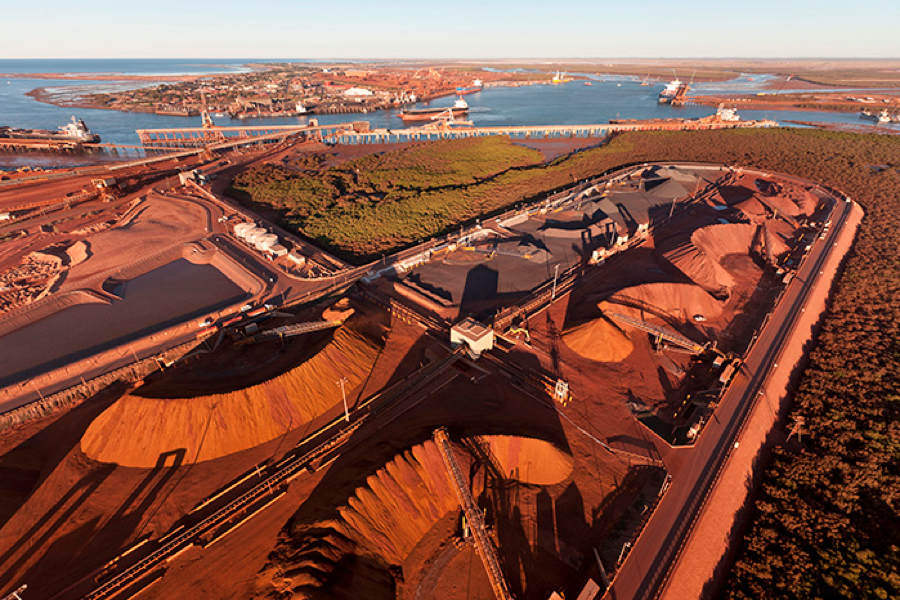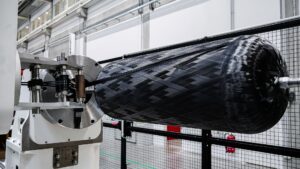
Port Hedland, the world’s busiest iron ore export terminal, recently witnessed a gathering of Rio Tinto Group executives, politicians, and media at a Pilbara airport. The occasion was the unveiling of Rio’s Western Range, a new open-cut mine designed to produce 25 million tons of iron ore annually. However, beneath the celebrations lies a stark reality: Western Range aims not at growth but at sustaining current production levels.
In the Pilbara, home to the world’s largest iron ore output, Rio Tinto is merely replacing old deposits with new ones to maintain its production. The sector, which once shielded Australia from the 2008 global financial crisis and fueled China’s construction boom, is now plateauing. Less than two months after the Western Range opening, Rio Tinto reported its lowest first-half profits in five years due to falling iron ore prices. This signals widening cracks in an industry that once seemed unassailable.
The Changing Landscape of Iron Ore
The steelmaking material that underpinned Australia’s economic ascent is losing its luster. Ore quality is declining, profit margins are tightening, and the vast deposits that fueled decades of prosperity are depleting. While this decline won’t happen overnight, the once-reliable resource may not suffice to navigate future financial challenges. Moreover, there’s no clear alternative to fill the economic void left by iron ore.
The Pilbara region, larger than California, has been the backbone of the global iron ore trade since the first shipment to Japan nearly 60 years ago. Although the industry has previously rebounded from slowdowns, current headwinds are stronger. Mining giants are investing billions in future projects as the industry’s foundations shift.
“It’s a very significant risk that sits across the Pilbara,” said Greg Lilleyman, a veteran mining executive. “Customers want higher quality iron ore, lower emissions per ton of steel, higher productivity from smaller footprints.”
Economic Implications and Global Competition
As China’s demand for Australian iron ore peaks, Canberra forecasts a price drop to $74 a ton by 2027, about 40% below the five-year average. This spells trouble for the federal budget, with sector revenue expected to fall by more than A$19 billion ($12.2 billion) over the next two years. Production volumes are also expected to peak within three years.
This downturn is a sharp reversal for a sector that Westpac Banking Corp. estimates drove more than half of Australia’s living standards gains in the early 21st century. Without major productivity reforms, the end of the “mining dividend” could cost each Australian A$75,000 in lost income over the next decade, according to senior economist Pat Bustamante.
“Iron ore is the bedrock of Australians’ prosperity and the thread which binds us to the global economy,” Madeleine King, Australia’s minister for resources, stated at the Western Range mine opening.
Despite iron ore still constituting over 4% of Australia’s economy, maintaining production and exploration is increasingly challenging and costly as ore quality declines. Meanwhile, steelmakers face pressure to reduce emissions, prompting a shift toward higher-grade ores that produce less carbon, much of which now comes from new mining hubs outside Australia.
Emerging Competitors and Strategic Shifts
In West Africa, the long-delayed Simandou project in Guinea, supported by Rio Tinto and Chinese investors, is nearing production, with its first shipment expected by year’s end. Simandou, home to some of the world’s highest-grade untapped iron ore reserves, is projected to produce over 100 million tons annually. Dubbed the “Pilbara killer” by Australian media, its development underscores Beijing’s ambition to reduce reliance on Australian ore.
Rio Tinto’s outgoing CEO Jakob Stausholm emphasized continuity at the Western Range opening, highlighting the partnership with China Baowu Steel Group Corp., which owns 46% of Western Range. However, the Pilbara is showing its age as China diversifies its supply and demands cleaner ore.
“What got us to this point won’t get us where we need to go,” said Tim Day, head of Western Australia iron ore operations at BHP Group Ltd.
Australia’s mining giants, including BHP, still enjoy low production costs and significant margins, but the fundamentals are shifting. Future output may increase in volume but not in value, a concern given that this revenue stream is expected to fund the transition to clean energy.
Future Prospects and Strategic Diversification
Pilbara miners are redeploying capital into projects aimed at powering the energy transition, such as lithium and rare earths. However, earnings from these ventures remain a fraction of iron ore profits, and investment risks are significant. Rio Tinto’s acquisition of Arcadium Lithium Plc and BHP’s attempted takeover of Anglo American Plc indicate strategic pivots toward alternative growth drivers.
“Critical minerals are important to Australia’s economy, diversified commodity portfolio and Net Zero plan ambitions, but are not a viable alternative for iron ore,” said Caroline Tiddy, a geologist and associate professor at the University of South Australia.
Fortescue founder Andrew Forrest advocates for green technology, warning that the Pilbara risks becoming a “wasteland” if Australia fails to adapt. Rio Tinto’s incoming CEO Simon Trott remains optimistic, asserting that the Pilbara will continue to anchor the economy for generations.
As external threats mount, including US tariffs and competition from Brazil’s Vale SA, Simon Trott faces significant challenges as he prepares to lead the world’s top iron ore exporter. Yet, he remains confident in the Pilbara’s enduring legacy.
“Iron ore in the Pilbara will be continuing long after I’m gone — and long after my children’s children have gone,” Trott stated.







